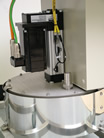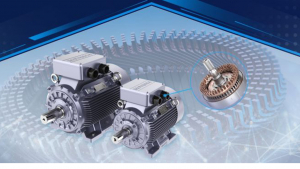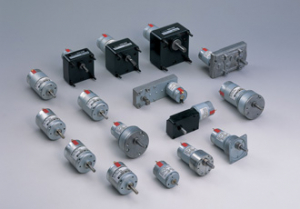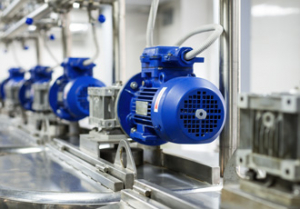Lifelike face tests respirators seals

A servo drive and linear actuator package from Parker Hannifin is helping to ensure that respirators seal against the users’ face under the most extreme conditions.
A computer controlled head form has been developed by i-bodi in Buckingham that mimics just about every possible facial expression, talking, breathing and hyperventilating. It is designed for testing the integrity of the seal of a respirator against the face to a level never previously achieved.
Jez Gibson-Harris, designer of the head form and Managing Director of i-bodi, explains the reasons behind the project. “The facial seal is vital to the performance of any respirator. The state of the art design has progressed so much in recent years that new standards of testing have become necessary. This required some innovative new ideas, some of which we transferred from our other business, Crawley Creatures, which makes animatronics for the film and TV industries, to a frightening level of realism.”
The head form is comprised of a hard skeletal base structure covered in a variable thickness silicone skin representative of the human face to produce a realistic locus surface upon which the respirators under test must sit and maintain an effective seal, even under the types of motion generated when a user is engaged in considerable physical activity in the harshest of environments.
The first movement that affects the seal is breathing; and respirator designs often have to accommodate the heaviest breathing. i-bodi simulate this using a large bellows mounted beneath the head form, This is driven by a Parker ET Electrothrust cylinder actuator and SMH series servomotor under the control of a Compax 3 servo drive.
The Compax and SMH ranges form the core technology of Parker’s servo offering. Available in single and multiaxis variants and a full range of sizes, they are typically used in handling applications, but also in highly developed mechatronic systems that integrate and synchronise multiple complex motion axes. A comprehensive library of software controls is available, and IEC61131-3 compliant programming tools allow rapid development of bespoke solutions.
Similarly, the ET Thrust cylinder is something of a Parker workhorse. Its simple robust design has made it a firm favourite of design engineers the world over for more than 20 years, while its precision build means it can reproduce accuracy and repeatability of movement time and time again.
Parker assigned mechanics specialist, James Cadogan to liaise with the i-bodi team. He explained “The drives that control the breathing had to be robust and flexible in their operation. Had the requirement just been for ‘normal breathing’ we could have used a much simpler system, but for realistic tests we need to be able to simulate heavy breathing, ragged breathing and massive inhalations and exhalations. This meant we needed to produce very fast accelerations and constantly high speed changes of direction.”
In fact the bellows forms part of the i-bodi DBM-01 digital breathing machine, which again has some unique software at its heart. For the most part, the tests are conducted with the bellows set for ‘normal breathing’. However, it can also be set for moderate or heavy breathing or even panic and hyperventilating.
“The regular settings are fairly standard sinusoidal motion profiles – commonly used in industrial applications,” says Cadogan. “We could have just ramped up the speed for the extreme performance testing, but it would not have been particularly realistic. Instead, we wrote a non-regular pattern that included lots of sudden changes of speed and stroke – it makes the head look shockingly realistic.”
There is a second set of movements, covering swallowing, talking and shouting, and facial expressions - especially jutting out of the lower jaw, a movement that is commonly made when under stress and which could easily unseat a seal.
To simulate these Jez and his i-bodi design team identified 13 points of articulation, including nine around the lips to accurately simulate the articulatory phonetics of speech. Each of these is driven by a servo motor located within the head and driven by sophisticated software developed in-house to perfectly simulate talking breathing and facial movements.
A requirement of the design brief was that all of these drives be housed within the head form. “To say that this was a challenge would be an understatement,” recalls Jez. “In fact we ended up using the sort of servomotors found in remote control model aircraft. They are small, lightweight and we were able to adapt their mountings to fit the space available.”
Some of the test sequences have the head conversing or reciting poetry, with uncanny realism. Others simulate more violent head movements as if a person were shouting.
A variant of the head form can be fitted with a heavy protective helmet or a constrictive CBRN (chemical, biological, radiation, nuclear) hood. Another is the ability to make the head ‘sweat’; tiny valves at various points around the face release variable amounts of a saline solution. For the head to be commercially viable it has to meet many international standards including UL, CUL and CE from several different countries, all of which i-bodi has secured.
Similar articles
More from Parker Hannifin
- Flange system gains new certification for marine applications 4th June 2021
- New generation of oil condition monitoring technology 2nd June 2021
- Parker introduces new low GWP refrigeration dryer series 24th November 2020
- Steering into the future for mobile machinery 17th November 2020












Write a comment
No comments